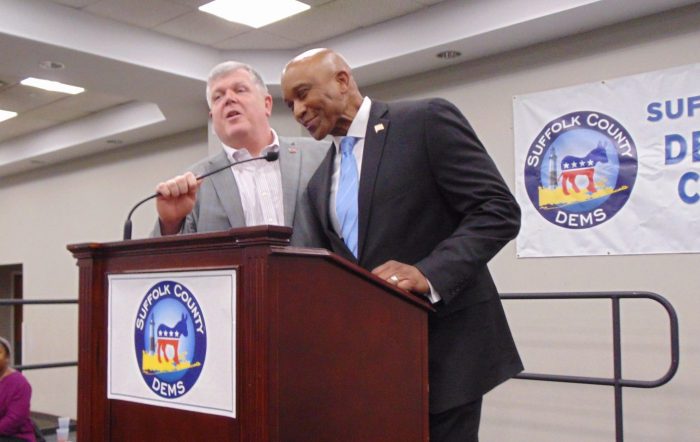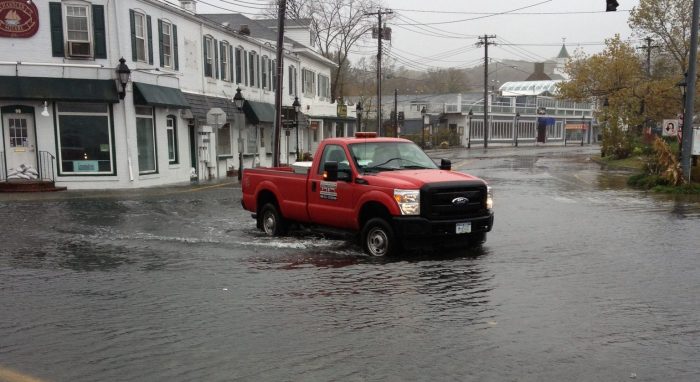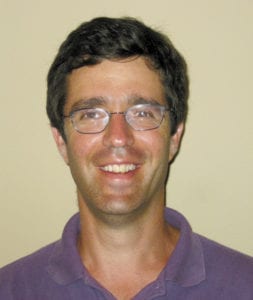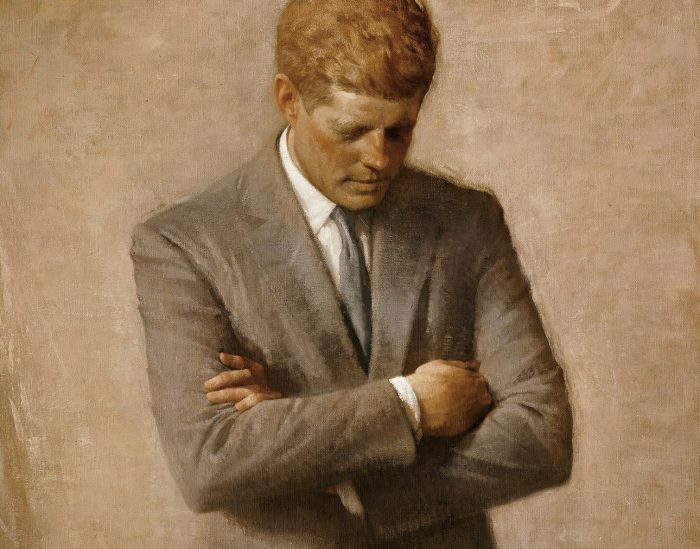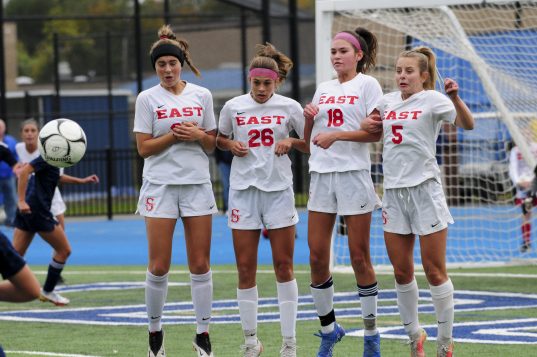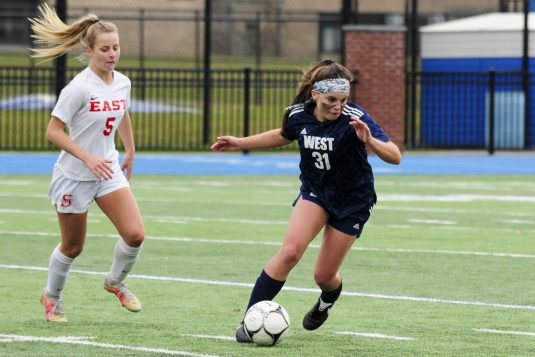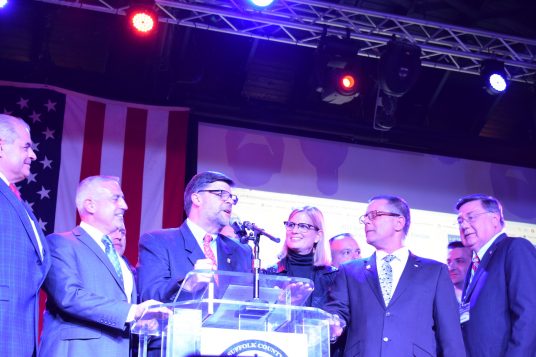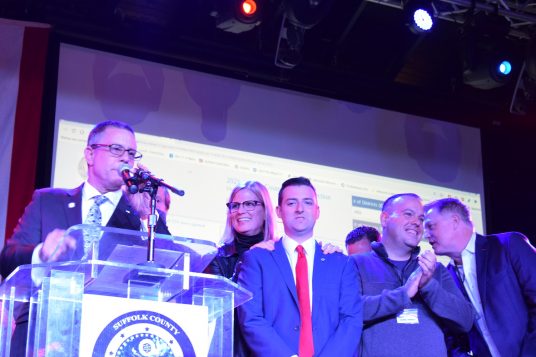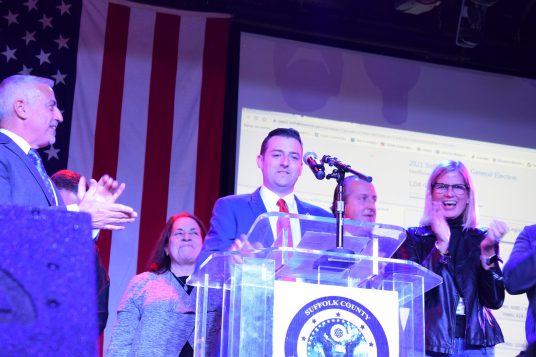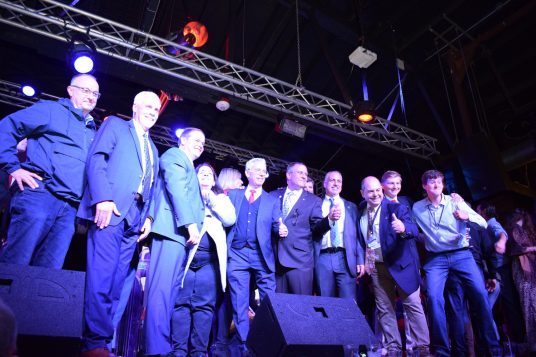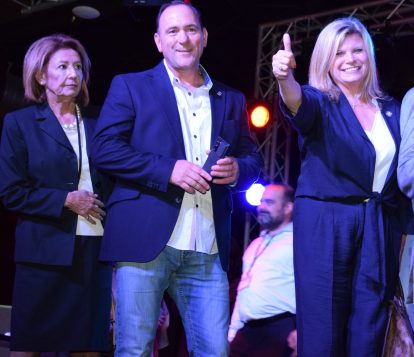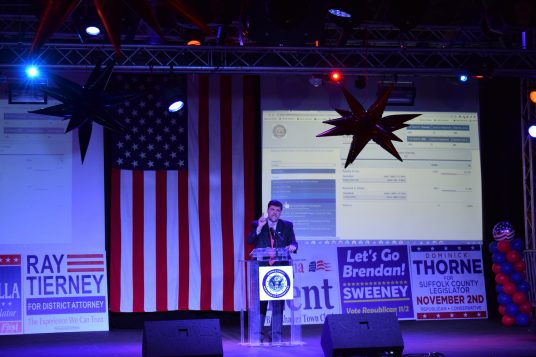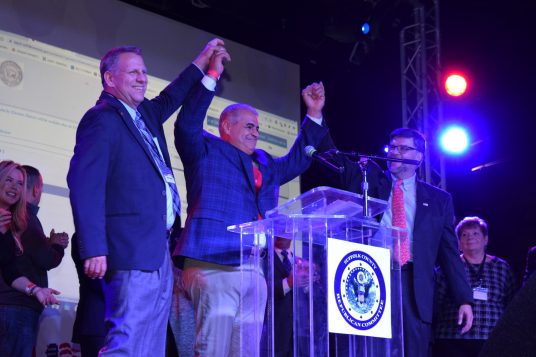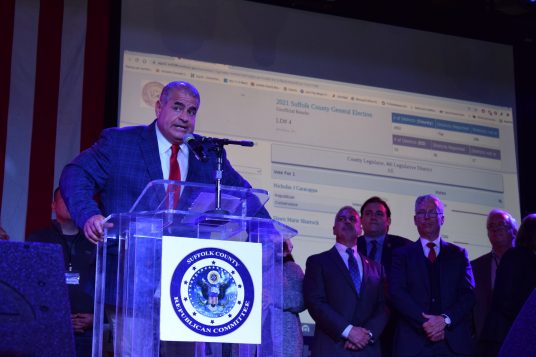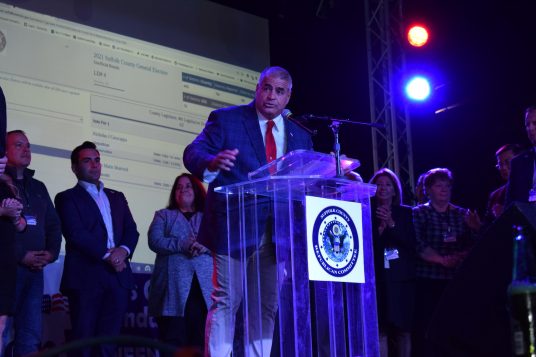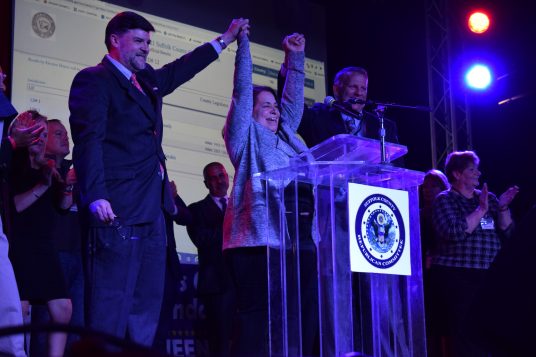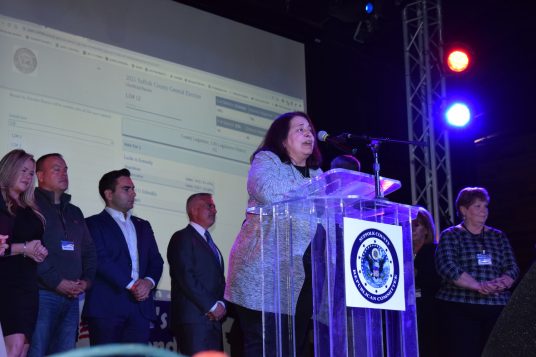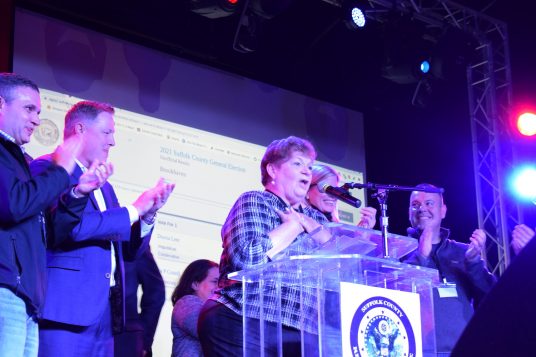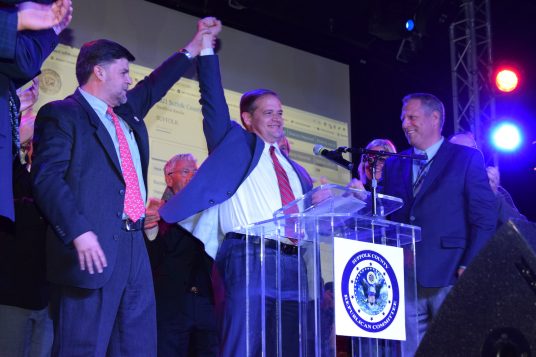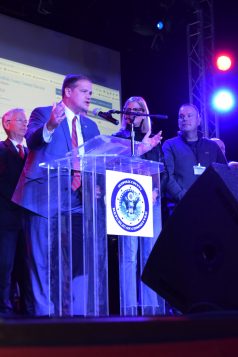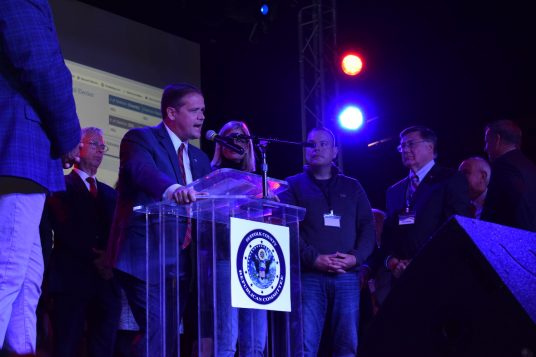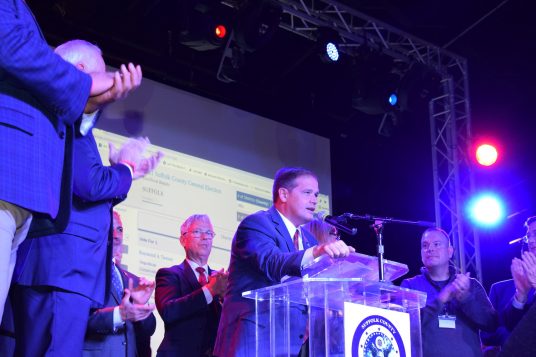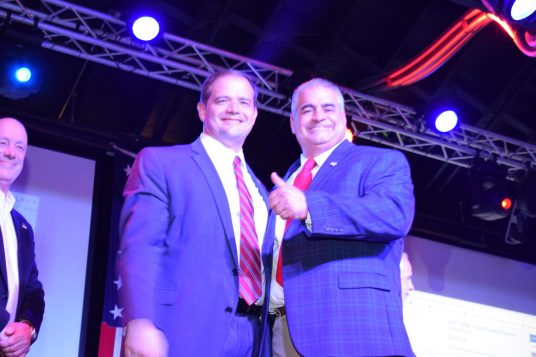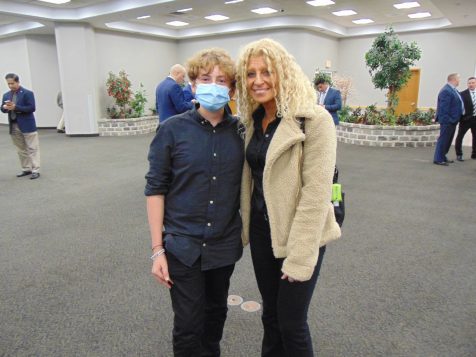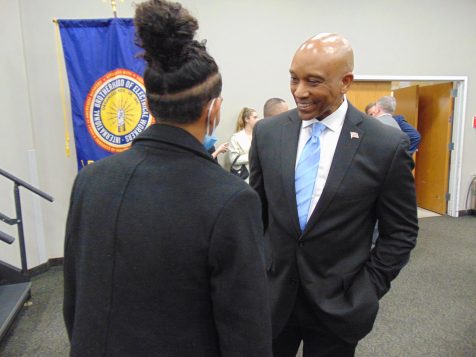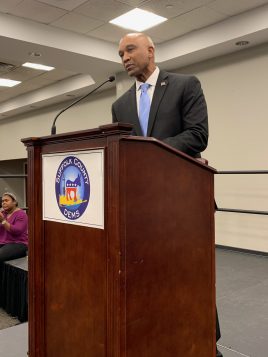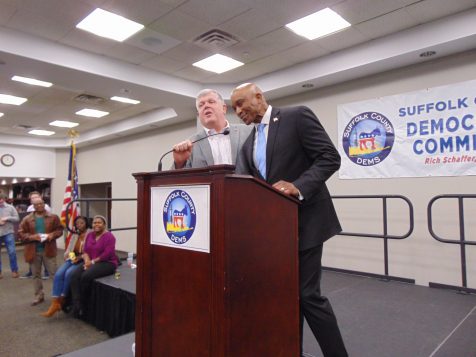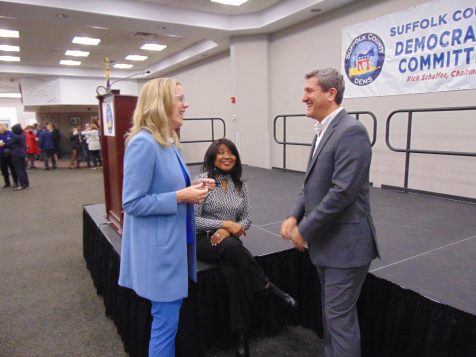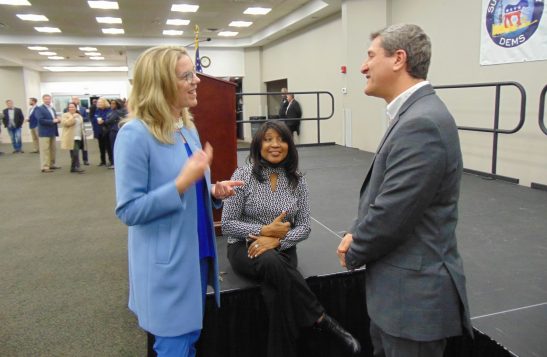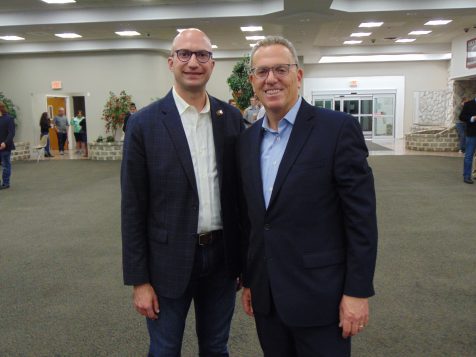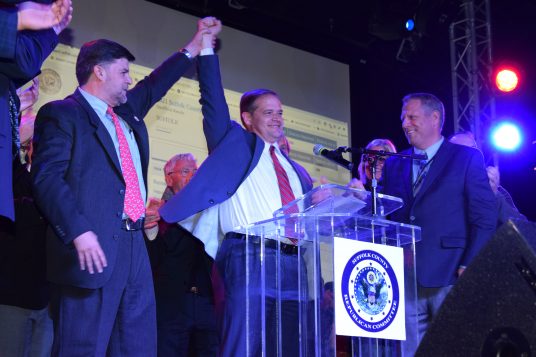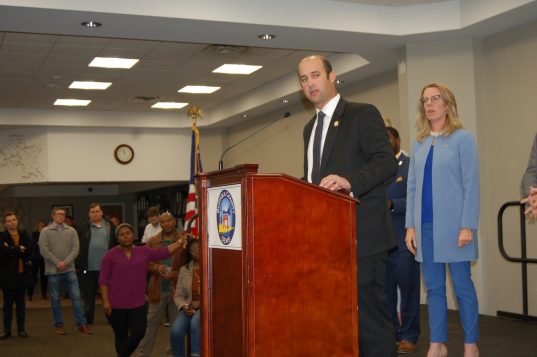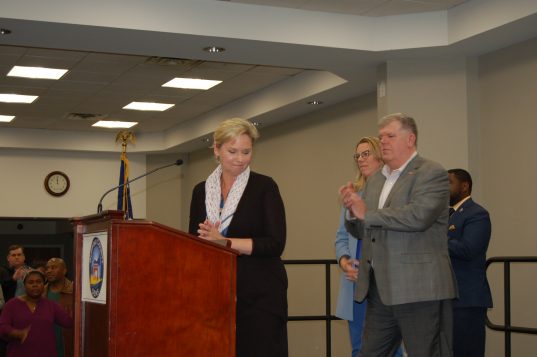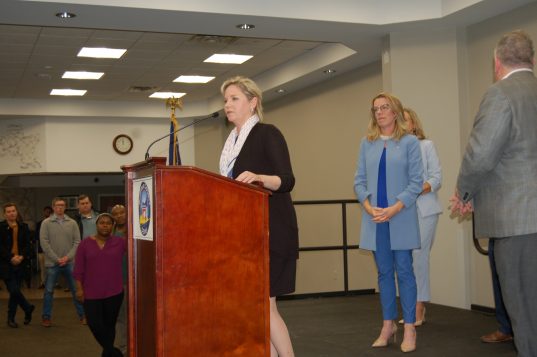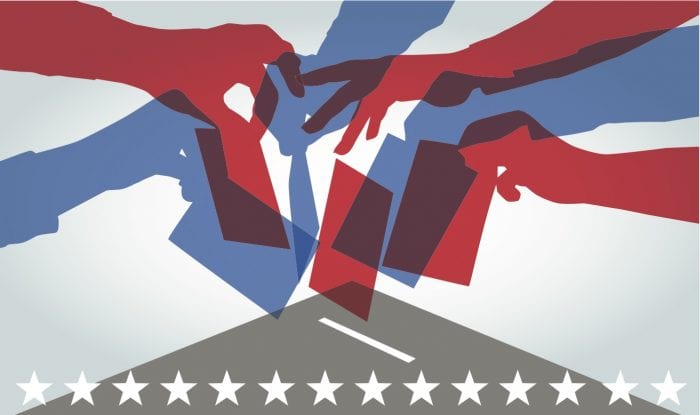By Rita J. Egan and Julianne Mosher
Election night, Nov. 2, found many Democratic candidates gathering at the IBEW Local 25 union hall in Hauppauge, while Republicans attended a get together at Stereo Garden in Patchogue. The Hauppauge event was a more somber one as some Democrats in the county lost their seats, while other races were close ones.
Rich Schaffer, who heads up the Suffolk County Democratic Committee, said Tuesday night’s results spoke more about what was happening on the national level than about the candidates.
“This was just, as you see, a big wave that took out some really good elected officials, and if you were a challenger, you had even a steeper row to hoe as opposed to an easy time, like we’ve normally been able to do,” he said.
While candidates and supporters eagerly awaited the results of in-person votes, the final tallies may not be known in some races for a few weeks due to the Suffolk County Board of Elections still needing to count absentee ballots. Results are as of the morning of Nov. 3.
Suffolk County district attorney
The race between county District Attorney Tim Sini (D) and prosecutor Ray Tierney, who ran on the Republican and Conservative lines, was a contentious one. At the forefront, Tierney questioned whether Sini has been as tough on crime as the DA himself has said, especially regarding the MS-13 gang.
At the end of the night, Tierney emerged the winner with 154,569 votes (57.34%). Sini garnered 114,943 (42.64%). Sini was first elected to the position in 2017.
“I am proud and humbled to stand before you here today,” Tierney said during his victory speech. “Despite being running against an incumbent, despite not having a lot of money in the beginning, despite not having the support of a lot of institutions — not for one day did I feel like an underdog, because of you guys.”
Tierney added his goal is to “fight every day to keep the citizens of Suffolk County safe.”
“I will reach out into the community to develop relationships so we can all have faith in our district attorney’s office,” he said.
Suffolk County sheriff
Errol Toulon Jr. (D) has been county sheriff since 2017 and was seeking his second term this election season. His opponent, William Amato, who ran on the Republican ticket, was not actively campaigning.
At the end of the night, Toulon was declared the winner with 142,510 (54.28%). Amato received 119,947 (45.69%).
Toulon Tuesday night was overwhelmed as he thanked those in attendance at the union hall.
“I do want to thank all of you for your constant support, not just your support now, but over the last four years of talking to me and encouraging me during some difficult circumstances in taking over the sheriff’s office, and I hope to do a better job over the next four years than I did over the last four years,” Toulon said.
Suffolk County legislators
County Legislator Nick Caracappa (R-Selden) won his seat for the 4th Legislative District with 8,748 votes (71.52%). Caracappa took on the role during a special election in 2020 following the death of Legislator Tom Muratore (R-Ronkonkoma). The incumbent’s opponent, Dawn Sharrock, on the Democratic ticket, had a total of 3,476 votes (28.42%).
“I’m looking forward to making real changes,” Caracappa said. “All the families here work hard and they deserve this victory — not just for the Republicans, this is for everybody. It’s a victory for Suffolk County — it’s a victory for the hardworking middle class.”
Sharrock said Tuesday night she sees herself running for office again.
“I honestly feel like I’ve learned so much,” she said. “I’ve grown so much. I’ve learned even just so much about myself. It’s been an experience that I’m so glad I was able to have. I’ve been surrounded by so many wonderful people, so many people who have supported me, never doubting my ability. It’s inspiring, and it’s uplifting. I have two daughters, a 16-year-old and a 14-year-old, and they’re so inspired by my journey and that means so much.”
Caracappa said he hopes that Sharrock continues to serve her community.
“It’s not easy to do that,” he said. “I respect anybody who wants to make positive change.”
The race in the county’s 5th District, which includes the Three Village Area and Port Jefferson, is a tight one. County Legislator Kara Hahn (D-Setauket) was in the lead with 7,582 votes (50.25%). Salvatore Isabella, who ran on the Republican ticket and did not actively campaign, had 7,508 votes (49.75%).
The night was a nail-biter for Hahn, who is up for her sixth term.
“I am cautiously optimistic that once all the votes are counted, voters will return me to office and I’ll be honored to continue to serve my community,” Hahn said in a statement Wednesday morning. “I look forward to continuing my work to protect our Long Island way of life and make a difference for our working families.”
County Legislator Sarah Anker (D-Mount Sinai) was seeking her sixth term in office. The incumbent trailed with 7,141 votes (42.10%). Town of Brookhaven employee Brendan Sweeney won the race with 8,329 votes (49.11%). The newcomer ran on the Republican ticket. Conservative candidate Anthony DeSimone garnered 1,488 votes (8.77%).
Sweeney declared victory during Tuesday night’s event.
“It feels so good,” he said. “The voters spoke. They want change for this county and now with me and the rest of the newly elected legislators, we can do what’s best for the people.”
Anker said she was hoping to continue as she has many projects she would like to complete.
“I’ll continue to do something to stay in the area of helping people, that’s my goal, my priority, and I appreciate all those people that came out to vote,” she said. “But this was, I think, a national tsunami.”
The legislator added her 6th District is a Republican area, and it has always been an uphill battle for her.
“I’m just very fortunate to have served as long as I have, over 10 years, and do all the projects and initiatives that I have,” she said.
In the 12th District which includes parts of the Town of Smithtown, Lake Grove, Lake Ronkonkoma and Centereach, county Legislator Leslie Kennedy (R-Nesconset) won her fourth term in office with 12,629 votes (74.57%). Her opponent Mike Siderakis, who ran unsuccessfully for state senator against Mario Mattera (R-St. James) last year, stopped actively campaigning this summer. Siderakis obtained 4,301 votes (25.40%).
Kennedy said during her victory speech at Stereo Garden that the win proves how well the party works together.
“We work hard, we have good values and we stand together as a team,” she said.
County Legislator Rob Trotta (R-Fort Salonga) garnered 10,896 votes (53.09%) and won his fifth term in office. Also on the ballot were Democrat Kevin Mulholland, who didn’t actively campaign, and won 4,693 votes (22.87%), and Michael Simonelli on the Conservative ticket, who campaigned but didn’t debate Trotta this election season. Simonelli had 4,932 votes (24.03%).
The district includes parts of Smithtown as well as Fort Salonga and portions of Commack and East Northport.
Trotta in an email statement said, “I am thrilled and honored that the people of the 13th Legislative District did not pay attention to the outright lies made by the police unions, of which my Conservative opponent was the treasurer, and [the people] voted for me based upon my record of fighting for the taxpayers, working for fiscal stability and helping my constituents.”
The 18th District, which sits in the Town of Huntington, included candidates Mark Cuthbertson (D), currently serving as Huntington Town councilman, and Stephanie Bontempi, a newcomer to the political field. The two decided to vie for the seat after county Legislator William “Doc” Spencer (D-Centerport) decided not to run this year. He is currently facing charges for allegedly trading oxycodone for sex.
Bontempi emerged the winner with 11,419 votes (53.89%), while Cuthbertson 9,765 votes (46.08%).
“Today is a new day for Suffolk County,” she said. “With this victory, we readily flipped the balance of power in the Legislature. We changed the list of priorities. Our neighbors and the community have chosen accountability, transparency and integrity. They’ve chosen a peer over an insider. I cannot wait to get started in working with my new colleagues.”
Cuthbertson said he never says never, but he doesn’t see himself going back to town politics currently. He said he was glad he ran for county legislator.
“We laid it all out there, and I’m at peace with how much we did,” he said.
Town of Brookhaven
Incumbent Donna Lent (R) faced Ira Costell (D) running for town clerk of the Town of Brookhaven. Lent, who is serving her second term as town clerk, has managed day-to-day operations such as issuing death certificates and handicap parking permits, while land-use applications are filed within the office.
Costell has taken leadership roles in environmental causes such as the Suffolk County Watershed Protection Advisory Committee and served as chair of the county’s Pine Barrens Review Commission. He has been passionate about the fight against opioid addiction and prescription drug abuse.
Lent won her seat with 54,318 votes (67.91%), while Costell had 25,642 (32.06%).
Town of Smithtown
Incumbent Ed Wehrheim (R) faced Democrat and newcomer to the political field Maria Scheuring in the race for Smithtown supervisor. The incumbent has been a part of town government for nearly 50 years. He won his first term as supervisor in 2017 after beating out Patrick Vecchio (R) who served in the position for nearly four decades.
Scheuring, an attorney, grew up in the Bronx, and moved to Smithtown in 2006 where she has a private practice dealing in matters from guardianship to visiting clients in nursing homes to looking over music contracts.
Smithtown residents voted back in Wehrheim Nov. 2. The incumbent had 20,446 votes (75.01%), while Scheuring garnered 6,806 (24.97%).
In an email statement, Wehrheim said he was humble and grateful for the support.
“Our first election cycle we set out to talk with the people in the community,” he said. “We didn’t preach or promise. We simply asked, ‘What do you want from your local leaders?’ We then devoted these past four years to delivering for the community. We didn’t kick the can and wait for help when COVID-19 inflicted its wrath upon us. We looked at every obstacle as an opportunity. I believe that the voting public visually and physically sees what we’ve accomplished in a short period of time: the parks, athletic fields, community entertainment, downtown improvements. They want more and we are eager to deliver.”
Scheuring said Tuesday night she learned a lot during the campaign and just how complicated it can be. The newcomer to the political field said she is interested in seeking office in the future, and she said regarding a position such as town supervisor the issues aren’t Democratic or Republican.
“It’s more, ‘Do we think this is the best for the town?’” she said.
Town of Smithtown councilmembers, Lynne Nowick (R) and Tom McCarthy (R), regained their seats with 19.833 votes (37.46%) for Nowick and 19,753 votes (37.31%) for McCarthy. Democratic candidates, Dylan Rice and Marc Etts, did not actively campaign and received 6,965 (13.16%) and 6,378 votes (12.05%) respectively.
Nowick thanked voters for putting their trust in her in an email statement.
“I look forward to working with my colleagues on the Town Board to keep Smithtown the alluring town that it is,” she said. “Quality of life in Smithtown is the highest priority. We will all continue to preserve our beautiful parks, beaches, golf courses and clean up any eyesores to keep Smithtown beautiful.”
McCarthy said in an email statement the voters sent a loud and clear message, and “it was a great night, not just for us but for all of Long Island.”
“I am extremely grateful to the Smithtown voters for their continued support and am eager to devote these next four years to delivering for the constituency,” he said. “We’re on the cusp of some big improvements coming to Smithtown, with a timeline to sewering Smithtown in place, a shovel in the ground in Kings Park, slated for January and St. James has never looked so good. We’re going to finish what we started and then some, creating an ideal community for our young professionals, families and seniors to call home indefinitely.”
Vincent Puleo ran unopposed for town clerk, and Robert Murphy was also the lone name on the ballot for superintendent of highways.
Town of Huntington
Two councilmen and a newcomer were on the ballots for Town of Huntington supervisor after current town Supervisor Chad Lupinacci (R) decided not to seek reelection. Councilmen Ed Smyth (R) and Eugene Cook, who ran as a third-party Independent candidate, gained 25,409 (56.34%) and 1,746 (3.87%) votes, respectively.
Democratic candidate Rebecca Sanin, president and CEO of nonprofit Health & Welfare Council of Long Island, had 17,940 votes (39.78%).
With councilmen Cuthbertson running for county legislator and Smyth running for town supervisor, two seats were up for grabs on the Town Board. Candidates David Bennardo and Sal Ferro ran on the Republican and Conservative party lines, while Joseph Schramm and Jennifer Hebert ran on the Democratic ticket. Bennardo and Ferro emerged the winners with 26,669 (30.46%) and 25,206 (28.79%), respectively. Hebert had 18,335 votes (20.94%) and Schramm 17,328 (19.79%).
Andre Sorrentino beat out incumbent Kevin Orelli for superintendent of highways with 25,565 votes (56.69%). Orelli garnered 19,524 (43.29%).

